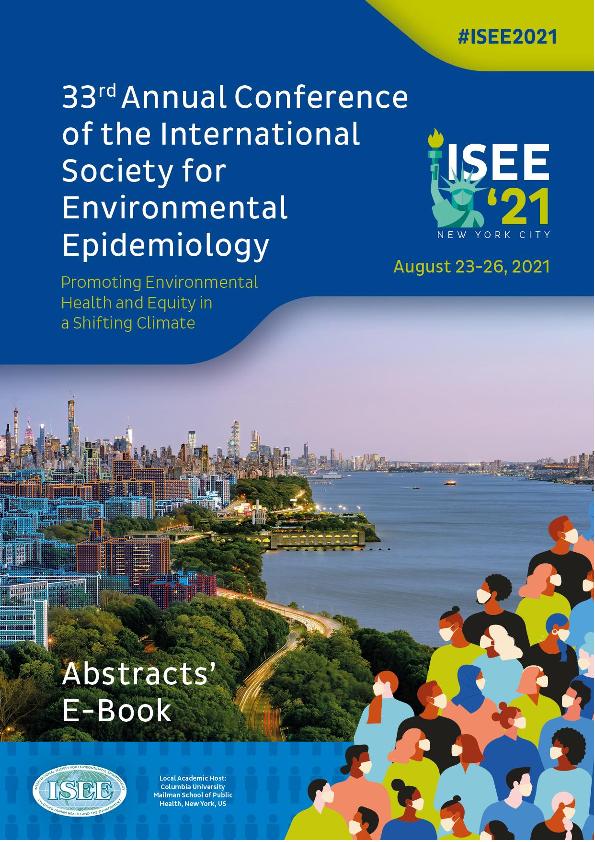Mostrar el registro sencillo del ítem
dc.contributor.author
Scruzzi, Graciela Fabiana

dc.contributor.author
Tumas, Natalia

dc.contributor.author
Pou, Sonia Alejandra

dc.date.available
2023-01-02T14:27:52Z
dc.date.issued
2021
dc.identifier.citation
Identifying geographical profiles of nutrition-epidemiological transition in Argentina; 33rd Annual Conference of the International Society for Environmental Epidemiology: Promoting environmental health and equity in a shifting climate; Nueva York; Estados Unidos; 2021; 186-186
dc.identifier.issn
1552-9924
dc.identifier.uri
http://hdl.handle.net/11336/182890
dc.description.abstract
BACKGROUND AND AIM: Latin America has experienced major shifts over the last decades in its demographic, nutritional, and epidemiological profiles. While the global trends and patterns have been widely described, the differences in the process of nutrition-epidemiological transition among and within low- and middle-income countries have been scarcely explained. This work aimed to identify different geographical profiles of nutrition-epidemiological transition within Argentina in the 2005-2019 period. METHODS: A nationwide ecological study in Argentina was performed, using health statistics and demographic information from official data sources about its 24 geographical units (provinces). Percentages of change (2005-2019) of selected nutritional, epidemiological, and demographic indicators were estimated by geographic unit. Using a Principal Component Analysis coupled with a Hierarchical Cluster Analysis, it was identified geographic clusters representing profiles of nutrition-epidemiological transition (NET) across the Argentinean territory. RESULTS:Three NET profiles (clusters) were identified: 1) "Reemergence of infectious diseases”, mainly characterized by a rising burden of infectious diseases (such as congenital syphilis among others), with a decrease in the years of potential life lost (YPLL) due to cancer and external causes; 2) "Persistence of cardiovascular diseases with improvements in health and lifestyles", with rising arterial hypertension prevalence and decreasing YPLL due to infectious diseases, infant mortality and physical inactivity prevalence; 3) “Consolidation of the obesity-physical inactivity-cardiometabolic diseases triad", characterized by increases in the YPLL due to cardiovascular diseases, in the prevalence of type 2 diabetes and adult obesity, and the proportion of people with a low level of physical activity. These clusters (NET profiles) accounted for 25%, 50%, and 25% of Argentina's provinces, respectively. CONCLUSIONS:The identification of different epidemiological-nutritional profiles indicates that Argentina is facing different transitional processes. Macro-contextual factors may play a major role in shaping these profiles.
dc.format
application/pdf
dc.language.iso
eng
dc.publisher
National Institute of Environmental Health Sciences
dc.rights
info:eu-repo/semantics/openAccess
dc.rights.uri
https://creativecommons.org/licenses/by-nc-sa/2.5/ar/
dc.subject
OBESITY AND METABOLIC DISORDERS
dc.subject
CARDIOVASCULAR DISEASES
dc.subject
ENVIRONMENTAL DISPARITIES
dc.subject
MORTALITY
dc.subject
EPIDEMIOLOGY
dc.subject
INFECTIOUS DISEASES
dc.subject.classification
Salud Pública y Medioambiental

dc.subject.classification
Ciencias de la Salud

dc.subject.classification
CIENCIAS MÉDICAS Y DE LA SALUD

dc.title
Identifying geographical profiles of nutrition-epidemiological transition in Argentina
dc.type
info:eu-repo/semantics/publishedVersion
dc.type
info:eu-repo/semantics/conferenceObject
dc.type
info:ar-repo/semantics/documento de conferencia
dc.date.updated
2022-10-21T13:59:20Z
dc.identifier.eissn
0091-6765
dc.journal.number
1
dc.journal.pagination
186-186
dc.journal.pais
Estados Unidos

dc.journal.ciudad
Durham
dc.description.fil
Fil: Scruzzi, Graciela Fabiana. Universidad Nacional de Córdoba. Facultad de Medicina. Escuela de Nutrición; Argentina
dc.description.fil
Fil: Tumas, Natalia. Consejo Nacional de Investigaciones Científicas y Técnicas. Centro Científico Tecnológico Conicet - Córdoba. Centro de Investigaciones y Estudios sobre Cultura y Sociedad. Universidad Nacional de Córdoba. Centro de Investigaciones y Estudios sobre Cultura y Sociedad; Argentina
dc.description.fil
Fil: Pou, Sonia Alejandra. Universidad Nacional de Córdoba. Facultad de Medicina. Escuela de Nutrición. Cátedra de Estadística y Bioestadística; Argentina. Consejo Nacional de Investigaciones Científicas y Técnicas. Centro Científico Tecnológico Conicet - Córdoba. Instituto de Investigaciones en Ciencias de la Salud. Universidad Nacional de Córdoba. Instituto de Investigaciones en Ciencias de la Salud; Argentina
dc.relation.alternativeid
info:eu-repo/semantics/altIdentifier/url/https://ehp.niehs.nih.gov/doi/10.1289/isee.2021.P-171
dc.relation.alternativeid
info:eu-repo/semantics/altIdentifier/url/https://www.iseepi.org/past_meetings.php
dc.conicet.rol
Autor

dc.conicet.rol
Autor

dc.conicet.rol
Autor

dc.coverage
Internacional
dc.type.subtype
Conferencia
dc.description.nombreEvento
33rd Annual Conference of the International Society for Environmental Epidemiology: Promoting environmental health and equity in a shifting climate
dc.date.evento
2021-08-23
dc.description.ciudadEvento
Nueva York
dc.description.paisEvento
Estados Unidos

dc.type.publicacion
Journal
dc.description.institucionOrganizadora
International Society for Environmental Epidemiology
dc.source.revista
Environmental Health Perspectives

dc.date.eventoHasta
2021-08-26
dc.type
Conferencia
Archivos asociados
